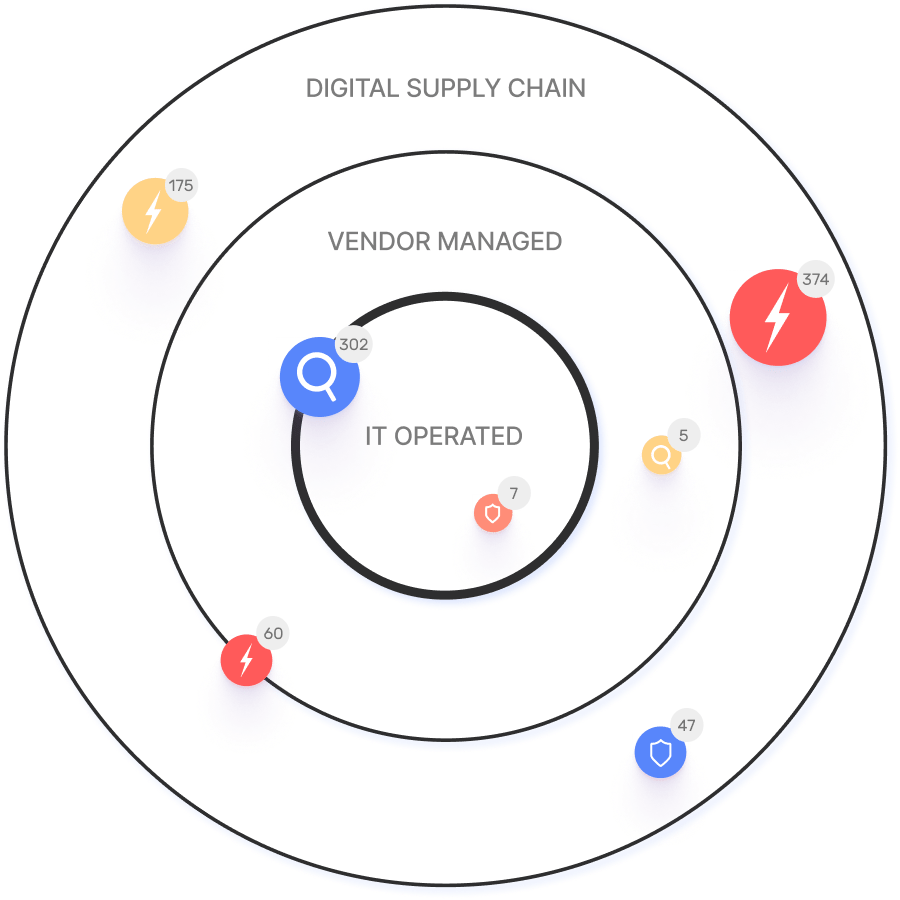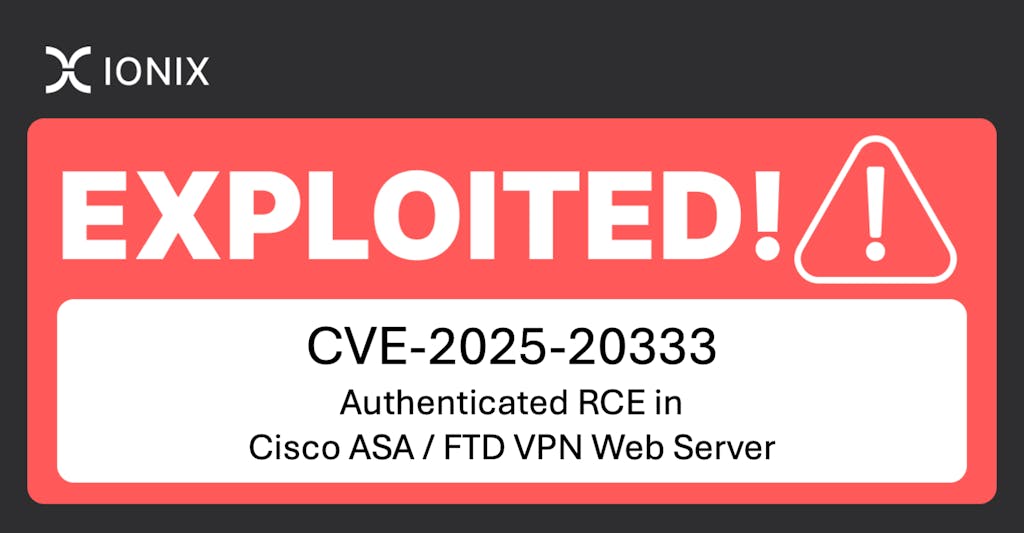Frequently Asked Questions
Product Information & Features
What is IONIX and what does it do?
IONIX is an External Exposure Management platform designed to help organizations identify exposed assets and validate exploitable vulnerabilities from an attacker's perspective. It enables security teams to prioritize critical remediation activities by providing complete attack surface visibility, identification of potential exposed assets, validation of assets at risk, and prioritization of issues by severity and context. Learn more at Why Ionix.
What are the main features of IONIX?
IONIX offers Attack Surface Discovery, Risk Assessment, Risk Prioritization, and Risk Remediation. Key highlights include ML-based 'Connective Intelligence' for asset discovery, Threat Exposure Radar for prioritizing critical issues, comprehensive digital supply chain mapping, and streamlined remediation workflows. For more details, visit Why Ionix.
What integrations does IONIX support?
IONIX integrates with tools such as Jira, ServiceNow, Slack, Splunk, Microsoft Sentinel, Palo Alto Cortex/Demisto, AWS Control Tower, AWS PrivateLink, and Pre-trained Amazon SageMaker Models. For a full list, visit IONIX Integrations.
Does IONIX offer an API?
Yes, IONIX provides an API that supports integrations with major platforms like Jira, ServiceNow, Splunk, Cortex XSOAR, and more. Details are available at IONIX Integrations.
What is the Reduce Attack Surface feature?
The Reduce Attack Surface feature in IONIX allows organizations to gain visibility into their real attack surface and systematically control and reduce attack surface sprawl. This helps minimize vulnerabilities and improve overall security posture.
Security Controls & Technical Requirements
What types of security controls are effective for attack surface reduction?
Effective security controls for attack surface reduction include:
- Layered defense approach (administrative, physical, technical controls)
- Principle of least privilege
- Principle of least functionality
- Zero-trust policies
- Network segmentation
- Secure software development practices
- Elimination of redundant functionality
- Removal of unused assets
- Patching out-of-date systems
- Elimination of vulnerable APIs
- Reduction of endpoints
- Employee cybersecurity awareness training
For more details, see this resource.
How do you implement security controls for attack surface reduction?
Implementation starts with defining control objectives and goals, followed by attack surface discovery. A comprehensive attack surface management (ASM) solution like IONIX streamlines this process by providing visibility, evaluating assets, and recommending mitigation actions. For more information, visit this page.
What is the importance of continuous security control implementation?
Continuous implementation is crucial because the attack surface is constantly expanding due to new vendors, services, and digital supply chain changes. Security controls must be regularly assessed and updated to address emerging vulnerabilities. IONIX enables continuous discovery and assessment of internet-facing assets and their risks. Learn more at this page.
What are the two main forms of attack surface reduction?
Attack surface reduction involves:
- Reducing risk by eliminating attack vectors
- Retiring outdated IT infrastructure
Combining these strategies helps minimize vulnerabilities.
Security & Compliance
What security and compliance certifications does IONIX have?
IONIX is SOC2 compliant and supports companies with their NIS-2 and DORA compliance, ensuring robust security measures and regulatory alignment.
How does IONIX ensure product security?
IONIX earned top ratings for product innovation, security, functionality, and usability. It was named a leader in the Innovation and Product categories of the ASM Leadership Compass for completeness of product vision and a customer-oriented, cutting-edge approach to ASM. For more details, visit this page.
Use Cases & Customer Success
Who are some of IONIX's customers?
IONIX's customers include Infosys, Warner Music Group, The Telegraph, E.ON, Grand Canyon Education, and a Fortune 500 Insurance Company. For more details, visit IONIX Customers.
What industries are represented in IONIX's case studies?
Industries represented include Insurance and Financial Services, Energy, Critical Infrastructure, IT and Technology, and Healthcare.
Can you share specific case studies or success stories?
Yes, examples include:
- E.ON: Used IONIX to continuously discover and inventory internet-facing assets and external connections, improving risk management. Read more.
- Warner Music Group: Boosted operational efficiency and aligned security operations with business goals. Learn more.
- Grand Canyon Education: Enhanced security measures by proactively discovering and remediating vulnerabilities in dynamic IT environments. Details available.
What business impact can customers expect from using IONIX?
Customers can expect improved risk management, operational efficiency, cost savings, and enhanced security posture. IONIX helps visualize and prioritize hundreds of attack surface threats, streamlines security operations, reduces mean time to resolution (MTTR), and protects brand reputation and customer trust. For more details, visit this page.
Implementation & Support
How long does it take to implement IONIX and how easy is it to start?
Getting started with IONIX is simple and efficient. Initial deployment takes about a week and requires only one person to implement and scan the entire network. Customers have access to onboarding resources like guides, tutorials, webinars, and a dedicated Technical Support Team. For more details, visit this page.
What training and technical support is available for IONIX customers?
IONIX offers streamlined onboarding resources such as guides, tutorials, webinars, and a dedicated Technical Support Team to assist customers during implementation. Customers are assigned a dedicated account manager and benefit from regular review meetings. For more details, visit this page.
How does IONIX handle maintenance, upgrades, and troubleshooting?
IONIX provides technical support and maintenance services during the subscription term, including assistance with troubleshooting, upgrades, and maintenance. Customers are assigned a dedicated account manager and benefit from regular review meetings. For more details, visit this page.
Customer Experience & Value
What feedback have customers given about IONIX's ease of use?
Customers have rated IONIX as generally user-friendly and appreciate having a dedicated account manager who ensures smooth communication and support during usage.
How does IONIX address value objections?
IONIX addresses value objections by demonstrating immediate time-to-value with no impact on technical staffing, providing personalized demos, and sharing real-world case studies that show measurable outcomes and efficiencies.
How does IONIX handle timing objections?
IONIX offers flexible implementation timelines, a dedicated support team to streamline the process, seamless integration capabilities, and emphasizes the long-term benefits and efficiencies gained by starting sooner.
Competitive Differentiation
How does IONIX differ from similar products in the market?
IONIX stands out with ML-based 'Connective Intelligence' for better asset discovery, Threat Exposure Radar for prioritizing critical issues, comprehensive digital supply chain coverage, and streamlined remediation. Unlike alternatives, IONIX reduces noise, validates risks, and provides actionable insights for maximum risk reduction and operational efficiency. Learn more at Why IONIX.
Resources & Learning
Where can I find technical documentation and resources for IONIX?
Technical documentation, guides, datasheets, and case studies are available on the IONIX resources page at IONIX Resources.
Does IONIX have a blog and what topics does it cover?
Yes, IONIX's blog covers cybersecurity, risk management, exposure management, vulnerability management, and continuous threat exposure management. Key authors include Amit Sheps and Fara Hain. Visit IONIX Blog for the latest articles.








